Vamos avanzando en el Audi con grandes cambios. Lo primero que os muestro es referente a los discos de freno. Como hay que pintar la parte interior, creo unas plantillas del diámetro exacto con el cortador de círculos DSPIAE, y las pongo en los discos. La pintura utilizada es Titanium Silver de Tamiya, siendo este el resultado:
We are making progress on the Audi with big changes. The first thing I show you is the brake discs. As the inside has to be painted, I create some templates of the exact diameter with the DSPIAE circle cutter, and put them on the discs. The paint used is Titanium Silver from Tamiya, and this is the result:
Aquí los muestro con un lavado de panel liner de Tamiya, junto a las ruedas:
Here I show them with a Tamiya liner panel wash, next to the wheels:
Decir que las ruedas ya están terminadas, inclyendo las válvulas:
The wheels are already finished, including the valves:
Pasamos al alerón trasero. Aquí, lo que hice fue adaptar las fijaciones de plástico a los fotograbados, pero la verdad es que en la misma hoja de los fotograbados, había una pieza muy pequeñita que sustituía a la que yo había recortado de la pieza de plástico. Por tanto, despegué la parte de plástico para colocar la pequeña pieza del fotograbado. En la foto d ela izquierda, os muestro la fijación de la derecha, tal como la había dejado; la de la izquierda, con el plástico eliminado, y las dos pequeñas piezas del fotograbado. EN la foto de la derecha, tenemos todo listo para pintar: las fijaciones ya montadas de fotograbado, y el alerón con los huecos originales tapados con masilla, en los que solo hay una rajita para insertar el fotograbado de las fijaciones (que no se ve muy bien):
Let’s move on to the rear wing. Here, what I did was to adapt the plastic fixings to the photoetched parts, but the truth is that on the same sheet, in the photoetched parts, there was a very small piece that replaced the one I had cut out of the plastic part. Therefore, I peeled off the plastic part to place the small piece of the photoengraving. In the photo on the left, I show you the fixture on the right, as I had left it; the one on the left, with the plastic removed, and the two small pieces of the photoetched parts. In the photo on the right, we have everything ready to paint: the photoetched parts already mounted, and the aileron with the original holes covered with putty, in which there is only a crack to insert the photoetched parts of the mountings (which is not very well seen):
En las siguientes fotos, tenemos en la primera las derivas laterales y el propio alerón, ya pintados listos para las calcas, y en la segunda, ya con las calcas puestas, listas para lacar:
In the following pictures, we have in the first one the side drifts and the aileron itself, already painted ready for the decals, and in the second one, already with the decals on, ready to be lacquered:
Pasamos al bloque motor, el cual ya está con las calcas de fibra y con una capa de barniz satinado, a falta de detallar y cablear:
We move on to the engine block, which is already with the fibreglass decals and a coat of satin varnish, with detailing and wiring still to be done:
Para los cristales, preparamos las máscaras que tomamos del TK de Scalelab24, añadiendo otras por denbajo para que no encucie el cristal al pintar. Decir que las ventanas las pintaré por encima en negro mate, ya que me gustaba más de esta manera, que quedara mate la parte externa que no brillante si la pinto por debajo. Vemos los cristales enmascarados sin pintar en la primera foto, estando ya pintados en la segunda, junto al asiento:
For the windows, we prepared the masks that we took from Scalelab24’s TK, adding others underneath so that they don’t bind the glass when painting. I will paint the windows in matt black on top, as I liked it better this way, so that the external part would be matt rather than shiny if I paint it underneath. We can see the unpainted masked windows in the first picture, being already painted in the second one, next to the seat:
Y pasamos al proceso de lacado. Aquí os muestro todas las piezas que iba a lacar en sus soportes:
And now we move on to the lacquering process. Here I show you all the pieces that I was going to lacquer on their supports:
Y ahora, la carrocería lacada. Usé la laca Number5 que tenía abierta, y si bien estaba un poco espesa, le di dos manos muy ligeras y una tercera húmeda. Alguna mota tiene y alguna piel de naranja, pero la idea es pulir la carrocería, con lo que no me importaba que la capa de laca fuera gorda:
And now, the lacquered bodywork. I used the Number5 lacquer I had open, and although it was a bit thick, I applied two very light coats and a third wet one. It has some speckles and some orange peel, but the idea is to polish the bodywork, so I didn’t mind a thick coat of lacquer:
Para terminar el proceso de lacado, os muestro otras piezas. Destacar en la segunda foto, el asiento, en el que laqué la fibra trasera para enmascararla y poder acometer el siguiente proceso:
To finish the lacquering process, I show you other parts. The second picture shows the seat, where I lacquered the rear fibre to mask it and to be able to start the next process:
El asiento. Había oido que mezclando la pintura con polvos de talco, se podía crear esa textura típica de los asientos de competición. Y así lo hice: una vez enmascarada la fibra d ela parte trasera, y como tenía la pintura Tamiya LP3 negro mate que había diluido para los cristales, le añadí polvos de talco, una buena cantidad de ellos. Lo mezclé y lo puse en el aero con una aguja 0,4, y empecé a pintar. Dí una capa fina y esperé un poco a que se secara para ver el efecto. Me gustó y dí otra capa más espesa. Cuando se secó, le pasé un bastoncillo de algodón sobre las superficies con más desgaste, y se aclaró un poco el negro (creo que debido a los polvos de talco blancos). Y este es el resultado. Pongo una foto de lejos que es como se ve normalmente, y otra de cerca para que veáis el detalle:
The seat. I had heard that by mixing the paint with talcum powder, you could create that texture typical of competition seats. And so I did it: once the fiber of the rear part was masked, and as I had the Tamiya LP3 matt black paint that I had diluted for the windows, I added talcum powder, a good amount of it. I mixed it and put it in the airbrush with a 0.4 needle, and started painting. I did a thin coat and waited a bit for it to dry to see the effect. I liked it and did another thicker coat. When it was dry, I ran a cotton swab over the surfaces with more wear, and the black lightened a bit (I think because of the white talcum powder). And this is the result. I put a picture from a distance, which is how it normally looks, and a close-up picture so you can see the detail:
Espero que os haya gustado, y gracias por ver y comentar!!
I hope you liked it, and thanks for watching and commenting!

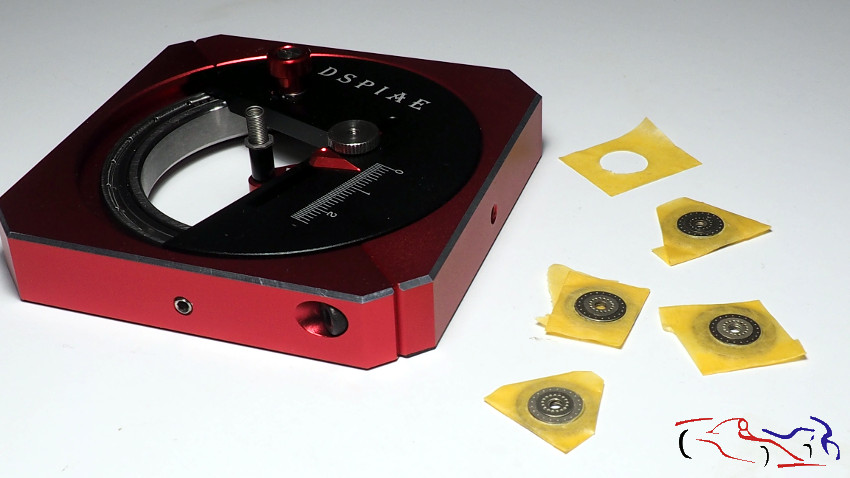
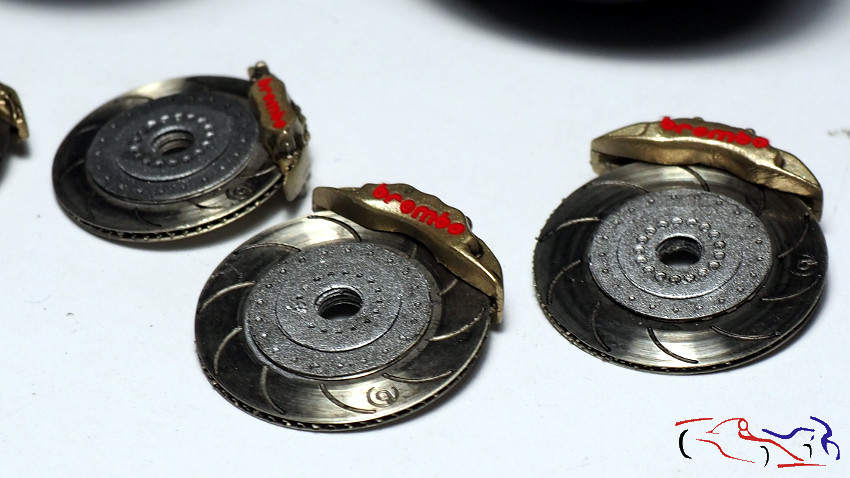
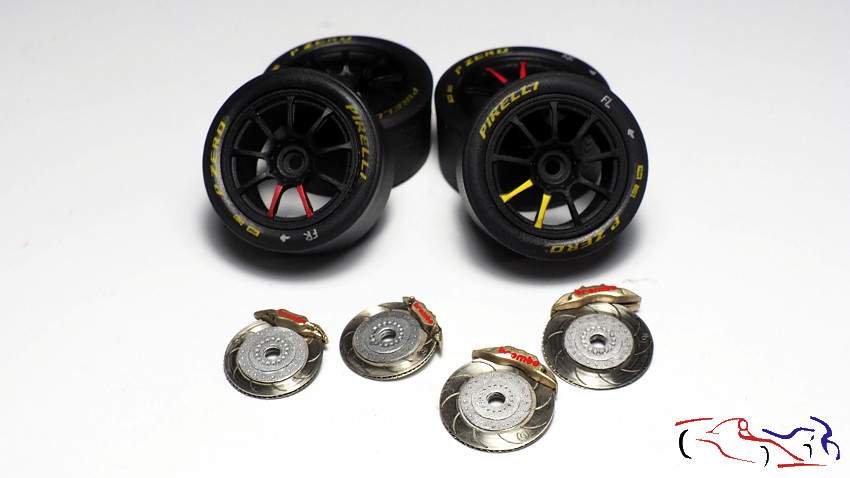
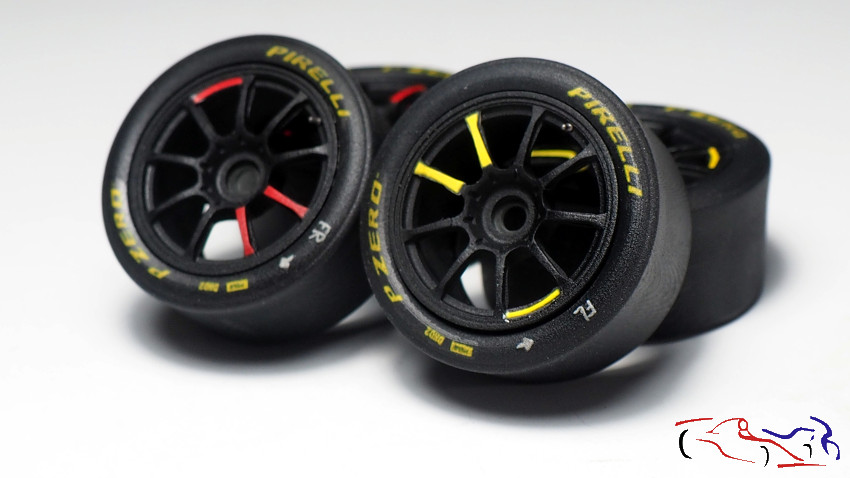
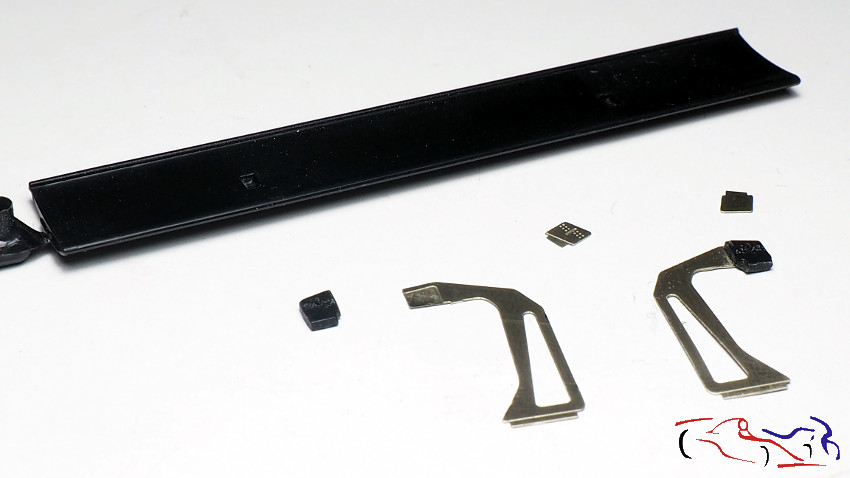
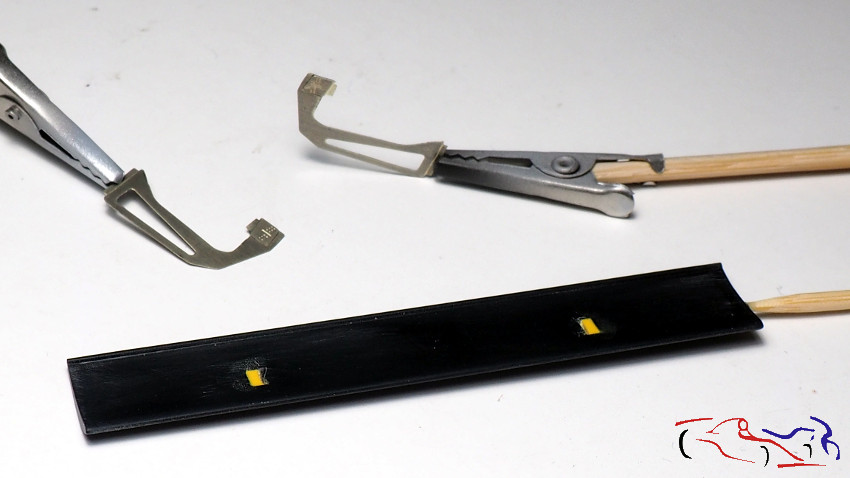
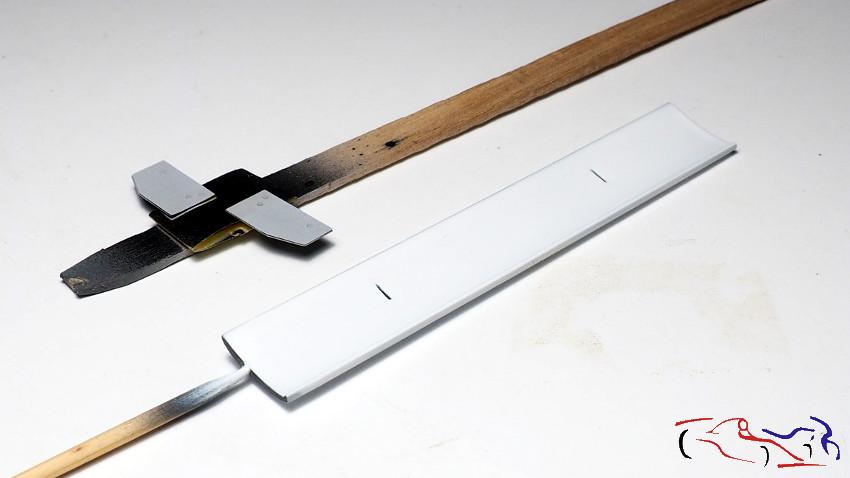
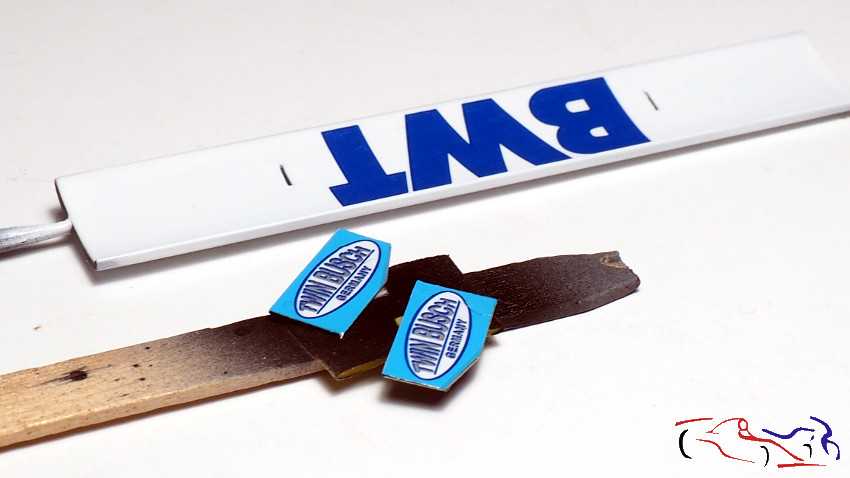
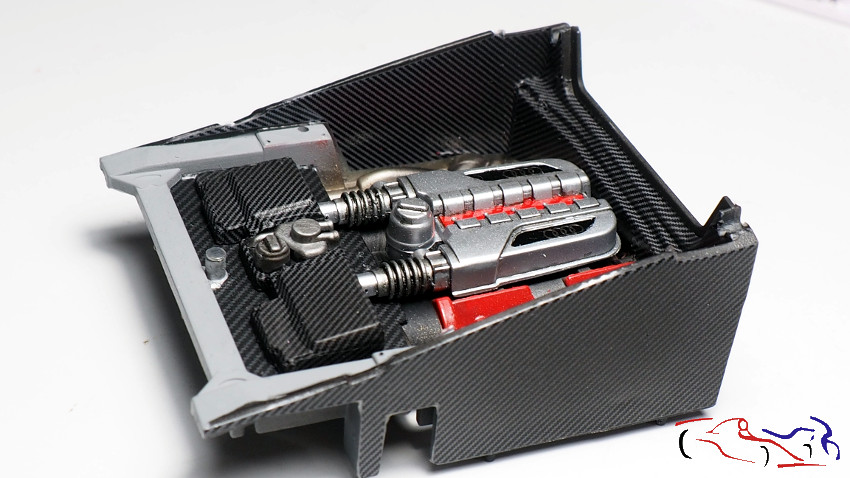
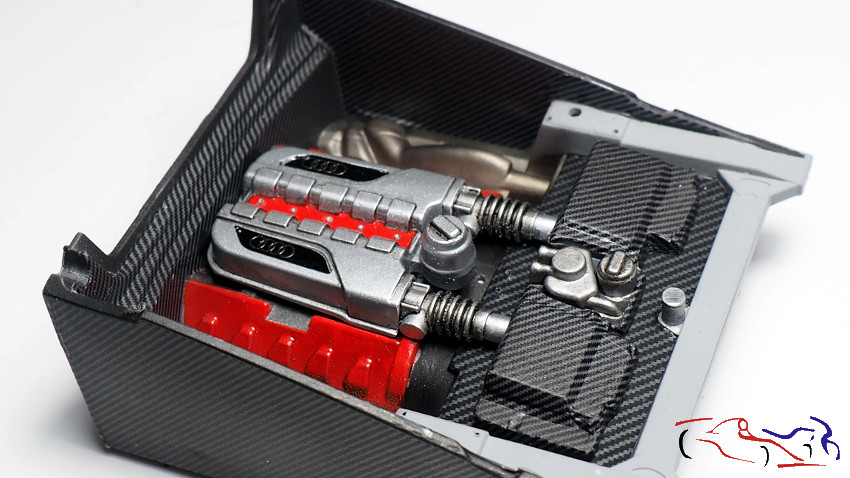
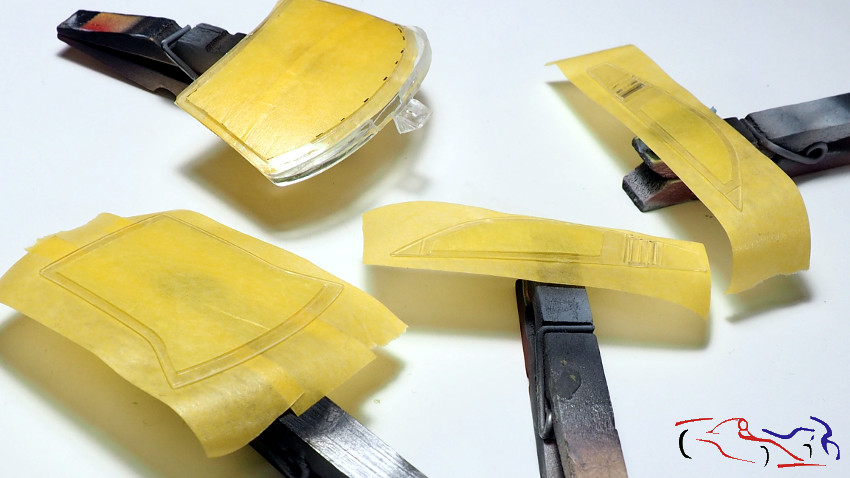
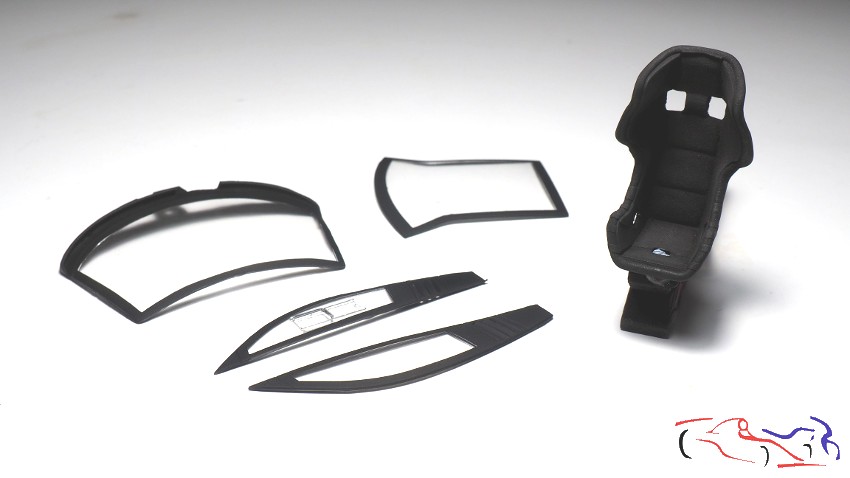
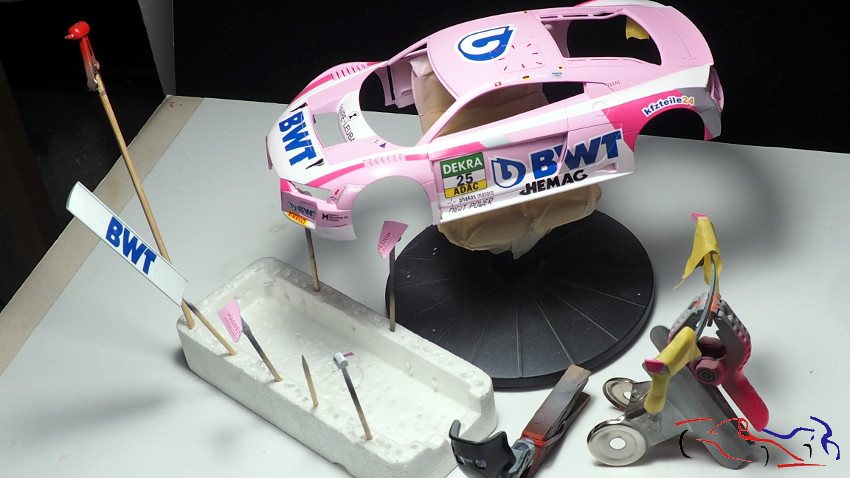
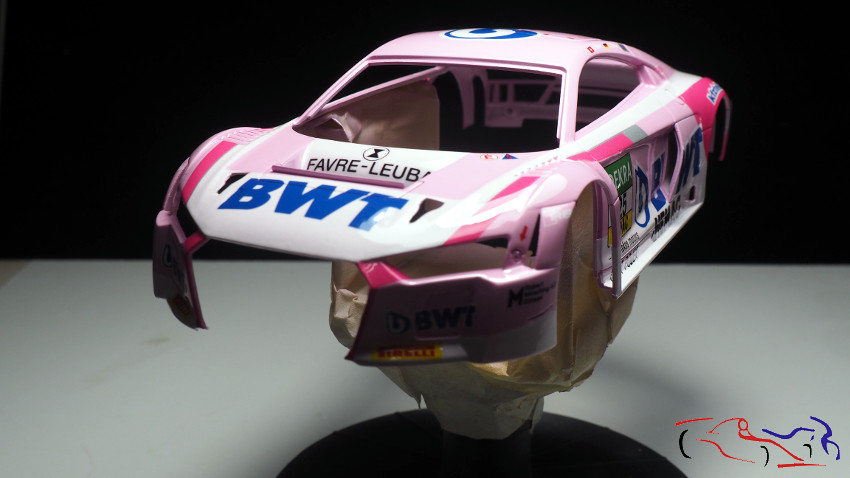
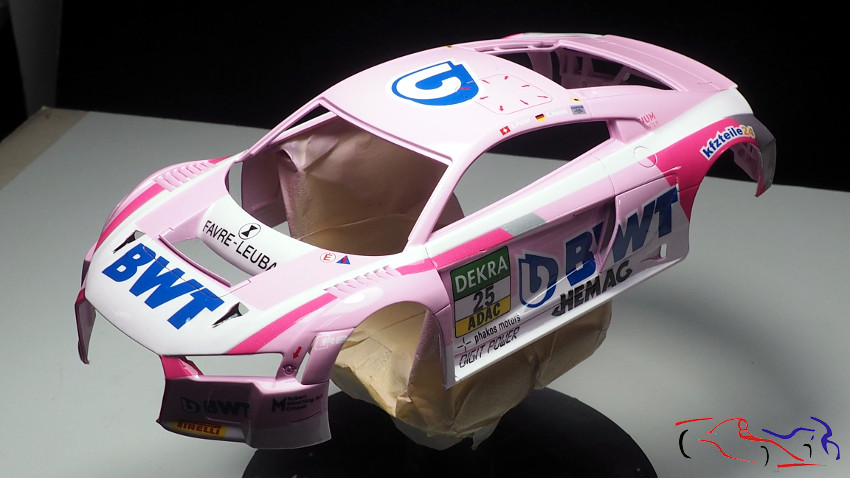
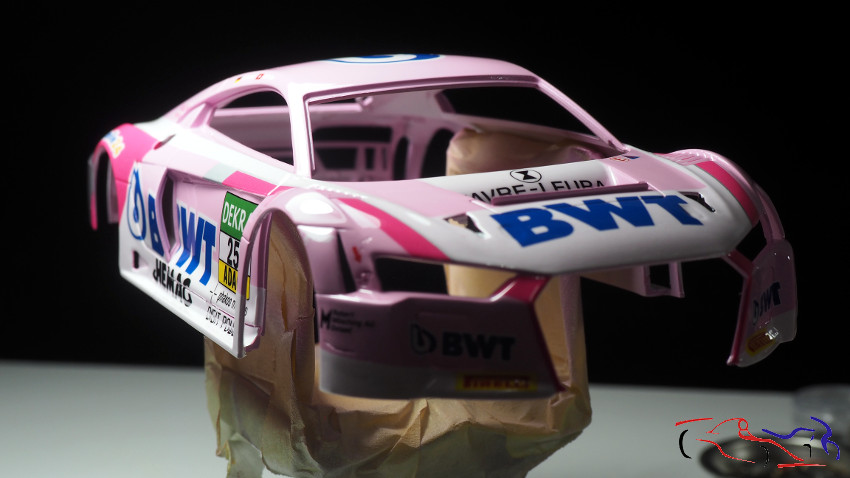
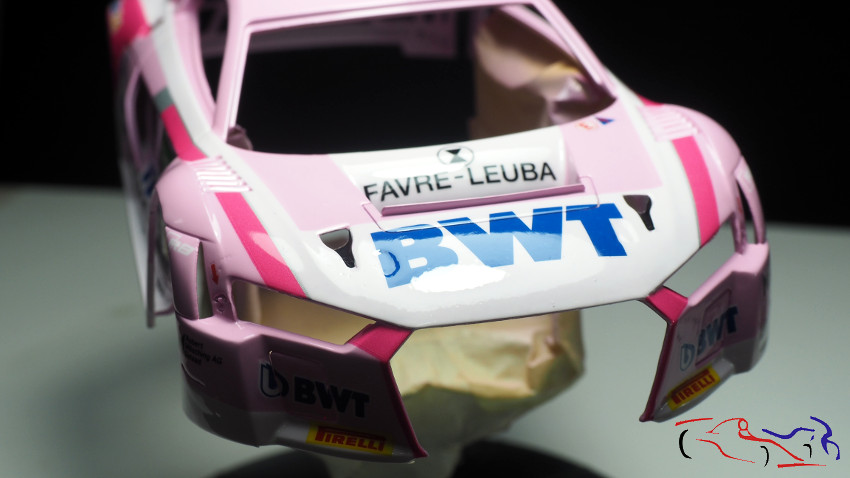
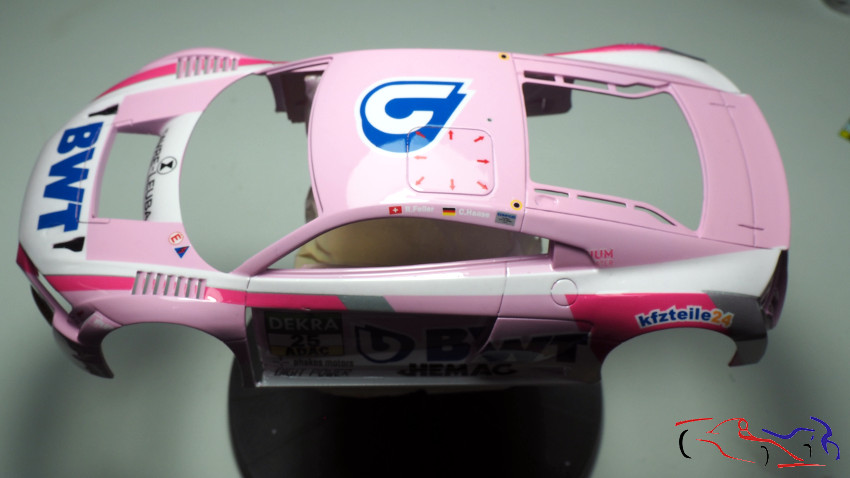
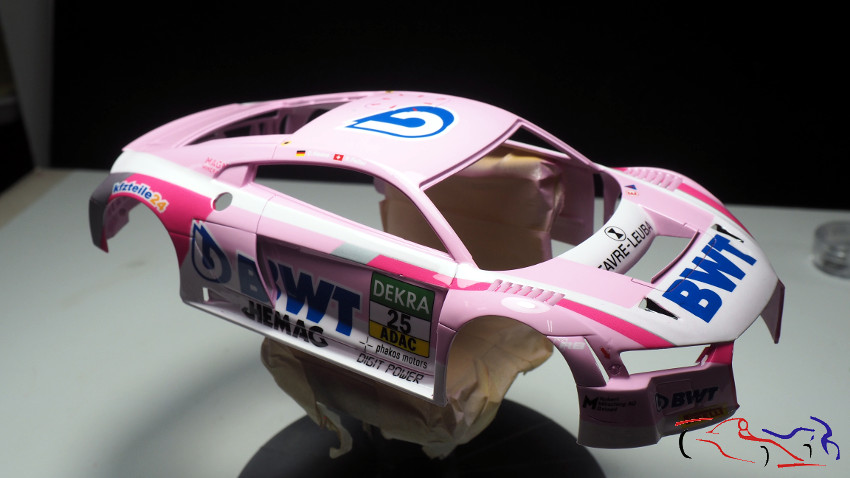
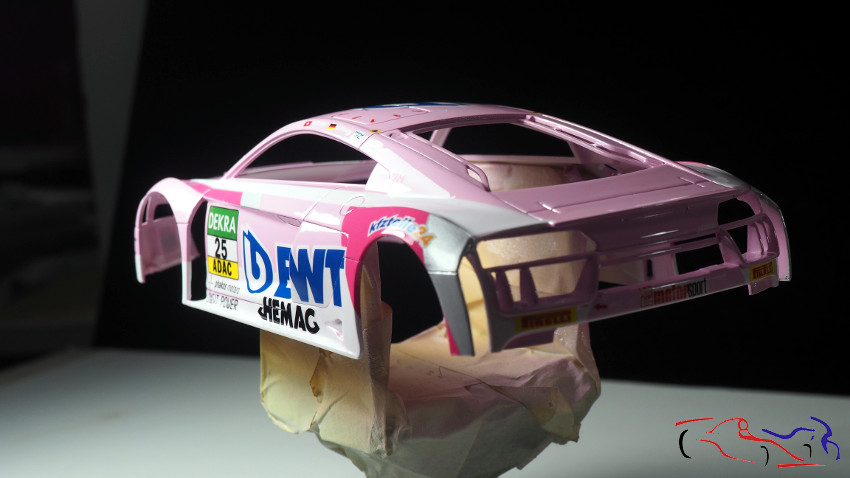
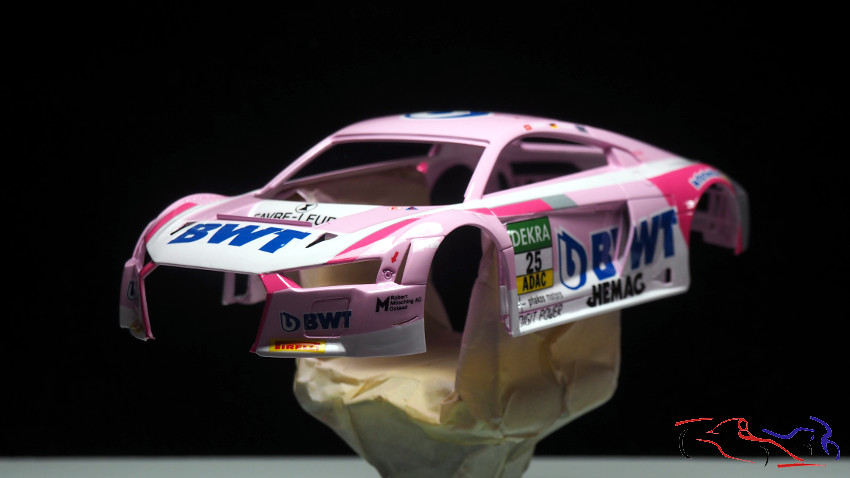
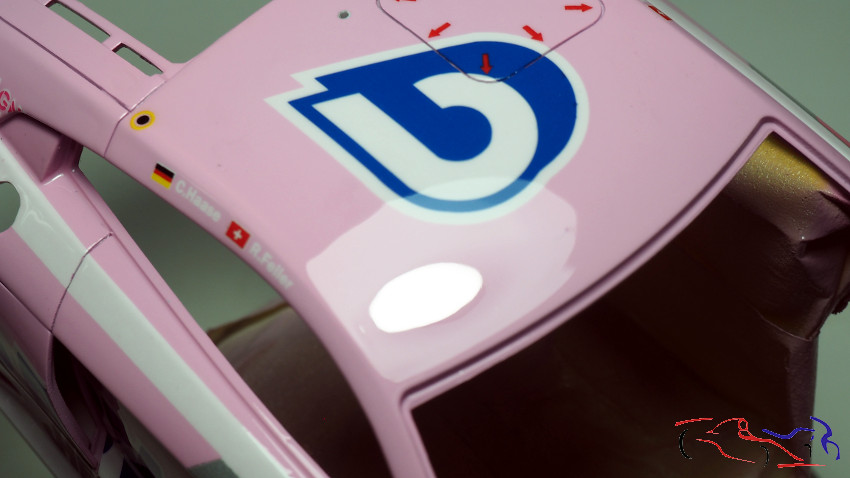
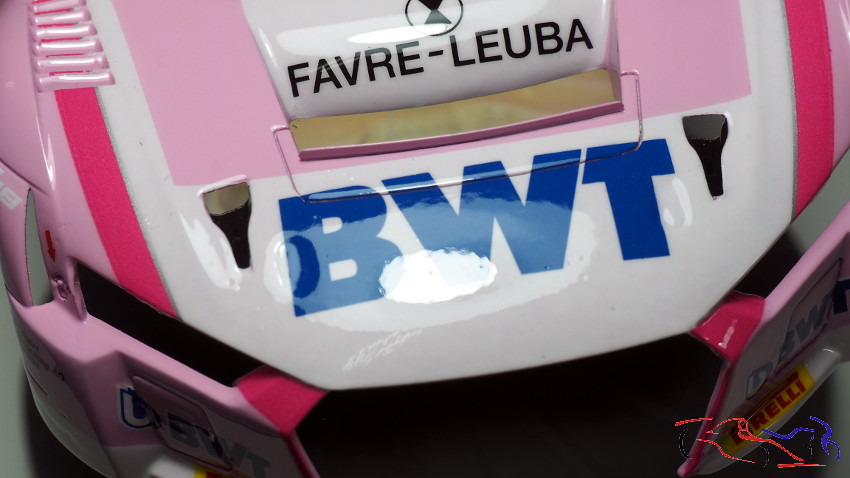
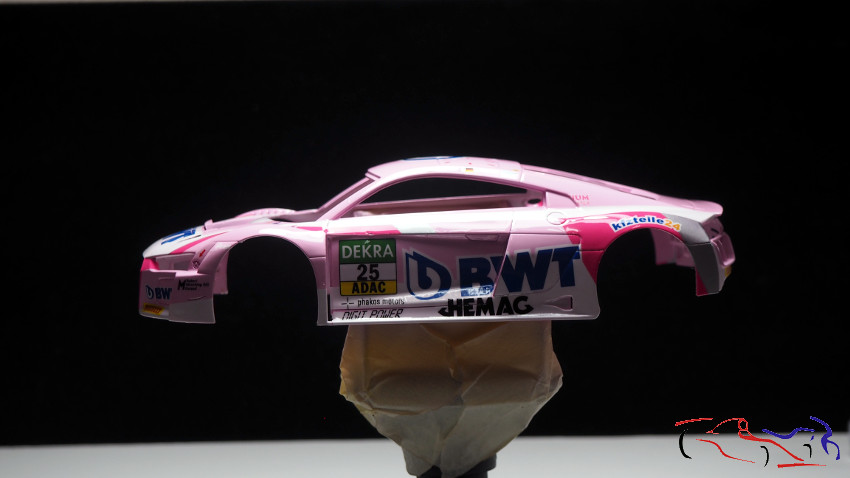
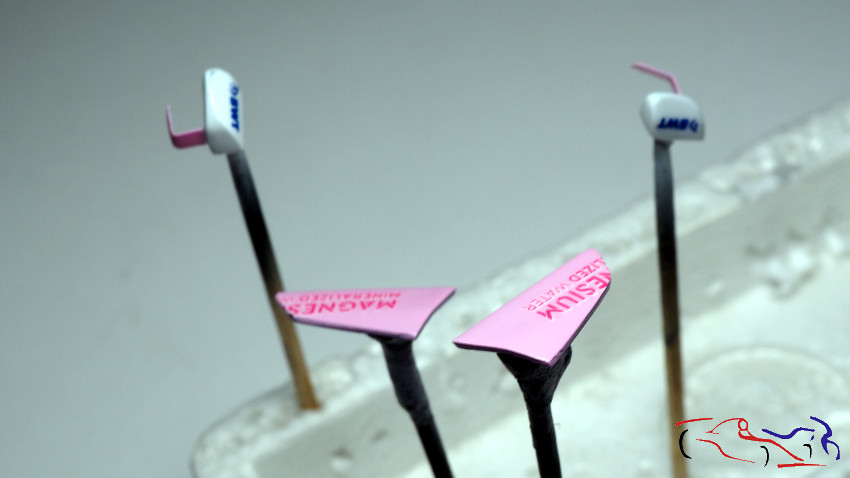
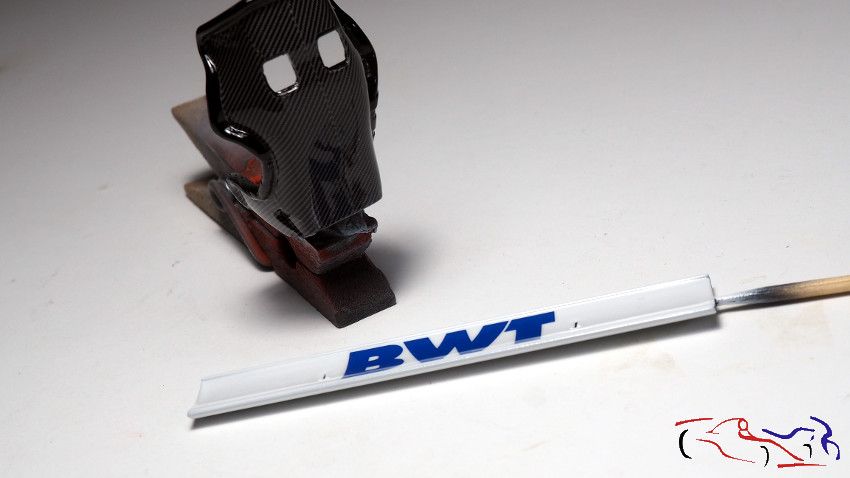
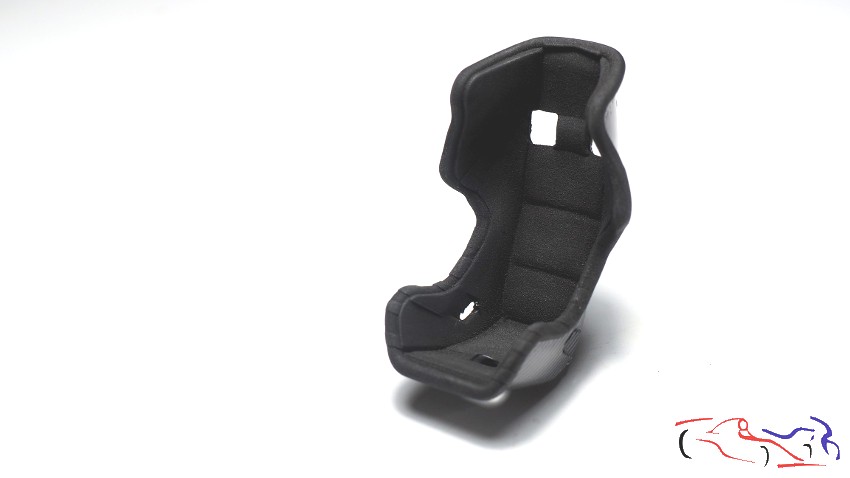
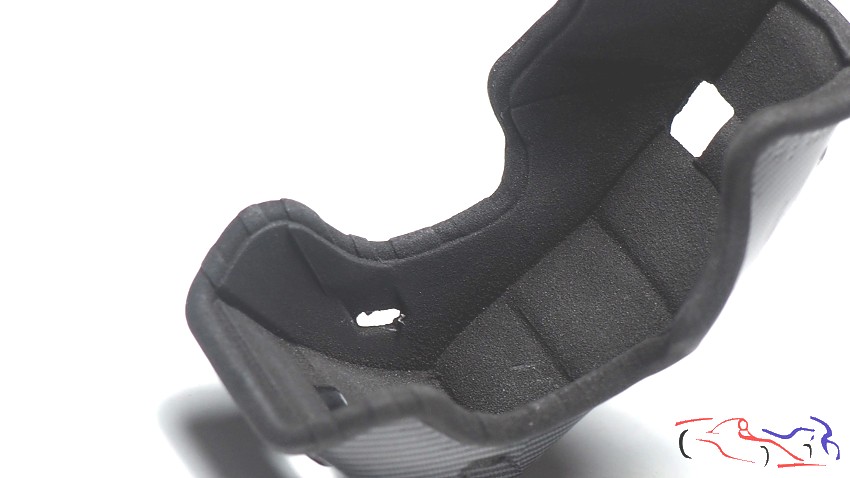
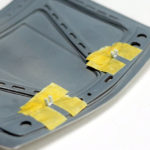
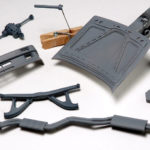
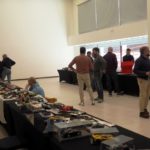
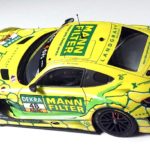
Thanks 🙏